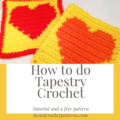How to Change Colors in Crochet – Mastering the Intarsia Crochet Technique
Please note, some of the links in the text below are affiliate links, which means that if you decide to buy any of their products or services, I’ll receive a small commission. It helps me to maintain my blog, support my family and allows me to continue to create free content. I only recommend products that I use and love. Thank you for your support. For more details click the disclosure
Hello, fellow crochet enthusiasts! Today, I’m excited to delve into a topic that’s been a hot query among many of you: “How do I crochet with multiple colors?” Today, let’s explore three techniques that will revolutionize your multi-colored crochet projects: Tapestry Crochet, Intarsia Crochet, and the Cut and Tie Technique.
While Tapestry crochet is great for some projects, for those intricate designs with a plethora of colors, like in my Pop Art Cat Pattern that boasts 17 colors, the Intarsia crochet technique is your go-to method.
Understanding Tapestry Crochet
Before diving into Intarsia, let’s briefly touch on Tapestry crochet. This technique involves carrying the yarn along the row, working over it so that it becomes encased within the stitches. It’s perfect for creating geometric patterns or designs with few color changes. For a more detailed look into Tapestry crochet, check out my blog post How to Do Tapestry Crochet: Pictures and a Free Pattern.
- Pluses: Ideal for patterns with repetitive color changes, creates a thicker fabric and is relatively easier for beginners.
- Minuses: Can be limiting for detailed or pictorial designs, and the fabric can become bulky due to the carried yarn.
- When to Use: Best for geometric patterns, small motifs, and projects where a sturdy fabric is desired.
What is Intarsia Crochet?
Intarsia crochet is a sophisticated colorwork technique used to create intricate, multi-colored patterns within a single crochet fabric. It involves working with several different colors of yarn, each as a separate strand. This method allows you to switch between colors within a single row or across your entire crochet pattern, rendering your work with vivid, mesmerizing hues.
The Intarsia Method
The beauty of Intarsia lies in its ability to weave multiple colors into a cohesive design. Unlike other techniques, when you change colors in Intarsia crochet, the yarn you’re not using is left loose behind your work. You don’t cut it; instead, you pick it back up when it’s time to switch colors again. This method ensures a seamless transition between colors and adds depth to your design.
- Pluses: Perfect for detailed, pictorial designs, maintains consistent fabric thickness, and allows for large blocks of color.
- Minuses: Can be challenging to manage multiple yarn strands, not ideal for patterns with frequent color changes.
- When to Use: Ideal for garments, blankets, and projects with distinct color blocks or detailed imagery.
Learn Intarsia Crochet
To help you master this technique, I’ve found a fantastic YouTube tutorial: “Intarsia Crochet Techniques Tutorial.” This step-by-step tutorial will walk you through the intarsia crochet technique, making it easy to follow even for beginners.
Watch the Intarsia Crochet Tutorial:
When to Use Tapestry vs. Intarsia Crochet Techniques
Both Tapestry and Intarsia crochet techniques are fantastic for incorporating multiple colors into your projects, but each has its specific strengths and ideal use cases.
Tapestry Crochet: Best for Geometric and Repetitive Patterns
- Ideal Projects: Tapestry crochet is perfect for projects where you need a sturdier fabric. It’s great for making bags, pouches, coasters, and rugs.
- Design Suitability: This technique shines in geometric patterns, stripes, or any design with repetitive elements.
- Color Usage: Best used when you have a limited number of colors that repeat frequently throughout the pattern.
- Fabric Characteristic: Tapestry crochet creates a thicker, more robust fabric due to carrying the yarn inside the stitches.
- Ease of Handling: It’s easier to manage since you’re typically dealing with fewer yarn strands.
Intarsia Crochet: Best for Complex and Detailed Imagery
- Ideal Projects: Intarsia is suited for garments, blankets, and wall hangings where a smoother, more drape-friendly fabric is desired.
- Design Suitability: This method excels in detailed, pictorial designs or any pattern where large blocks of colors change infrequently.
- Color Usage: Ideal for projects with many different colors, especially when each color is used in a distinct block or section.
- Fabric Characteristic: Intarsia maintains a consistent fabric thickness, making it preferable for garments or any project where a less bulky fabric is desired.
- Ease of Handling: This technique can be more challenging due to the need to manage multiple yarn strands without tangling. (To make it easier, use the Clover Yarn Bobbins; you can find them on Amazon here.)
Choosing the Right Technique
- Consider the Design: If your pattern involves detailed imagery or distinct color blocks, Intarsia is the way to go. For simpler, more repetitive designs with fewer color changes, Tapestry crochet is ideal.
- Think About the End Product: If you need a durable, thick fabric, Tapestry’s method of carrying yarn inside the stitches is beneficial. For projects where a flat, even texture is desired, Intarsia’s method of dropping and picking up colors works better.
- Skill Level and Patience: Tapestry might be more beginner-friendly due to less yarn juggling. Intarsia, while offering more design flexibility, requires more patience and skill to manage multiple strands of yarn.
Each technique has its unique charm and challenges. Choosing the right one depends on the nature of your project, the complexity of your design, and your comfort level with managing multiple yarns. Both techniques will expand your crochet repertoire and allow you to bring more colorful and intricate designs to life.
Introducing the Cut and Tie Technique
The Cut and Tie technique is a useful method in Intarsia crochet, particularly when color changes are spaced far apart. It involves cutting the yarn and securely tying it to ensure neat and tidy color transitions.
- Pluses: Ensures clean color changes over large distances, reduces the bulk of carried yarn.
- Minuses: Involves cutting and rejoining yarn, which can be time-consuming and requires careful finishing to secure ends.
- When to Use: Best used in Intarsia crochet projects with distant color changes.
For a detailed guide, watch “Intarsia Crochet: Cut and Tie Method”.
Choosing the Right Technique
When deciding which technique to use, consider the design of your project and the desired fabric characteristics. Tapestry crochet is great for sturdy, geometric designs; Intarsia is ideal for intricate, pictorial projects; and the Cut and Tie technique is perfect for large projects with spaced color changes.
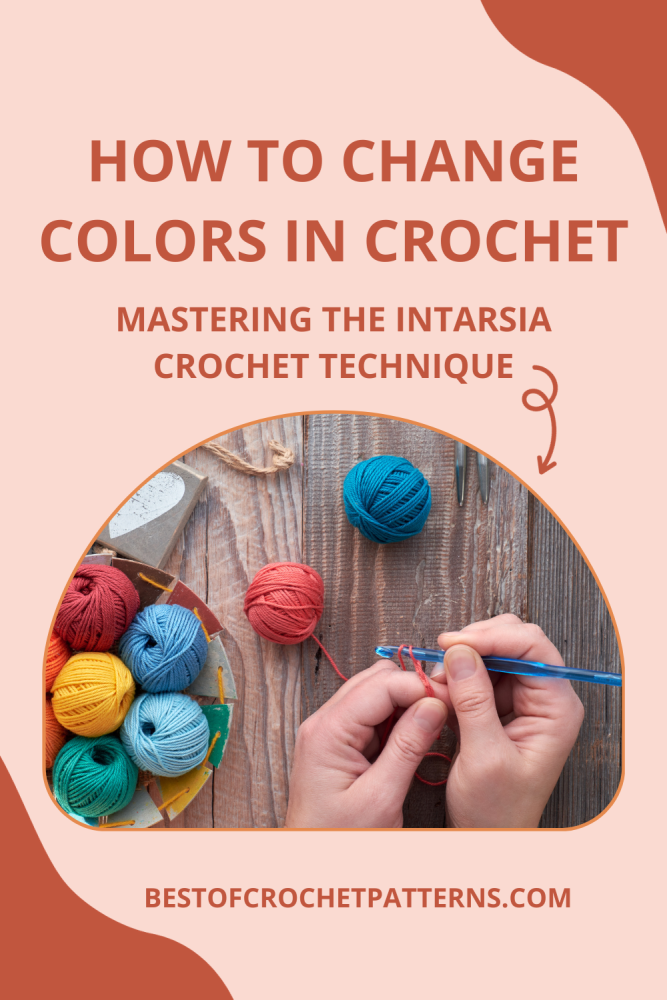
Explore More at My Etsy Shop
Don’t forget to visit my Etsy Shop for more inspiring patterns and supplies. Use the coupon code BESTOFCROCHET to get a 20% discount on your purchases. It’s a wonderful opportunity to try out your new Intarsia skills with some of my unique patterns!
Join My Email List
Lastly, I invite you to join my email list. As a welcome gift, you’ll receive a FREE Winnie the Pooh Pillow Pattern Download – a perfect project to practice your newly acquired Intarsia crochet skills.
Thank you for reading my Blog.
Have a beautiful day, and enjoy crocheting.
Katja

